It’s always the week that makes November worth celebrating. I’m referring to the spectacular display in my living room in the first ten days of November when my Japanese maple (Acer palmatum) transforms itself from a tracery of green to brilliant shades of apricot, coral, gold and scarlet.
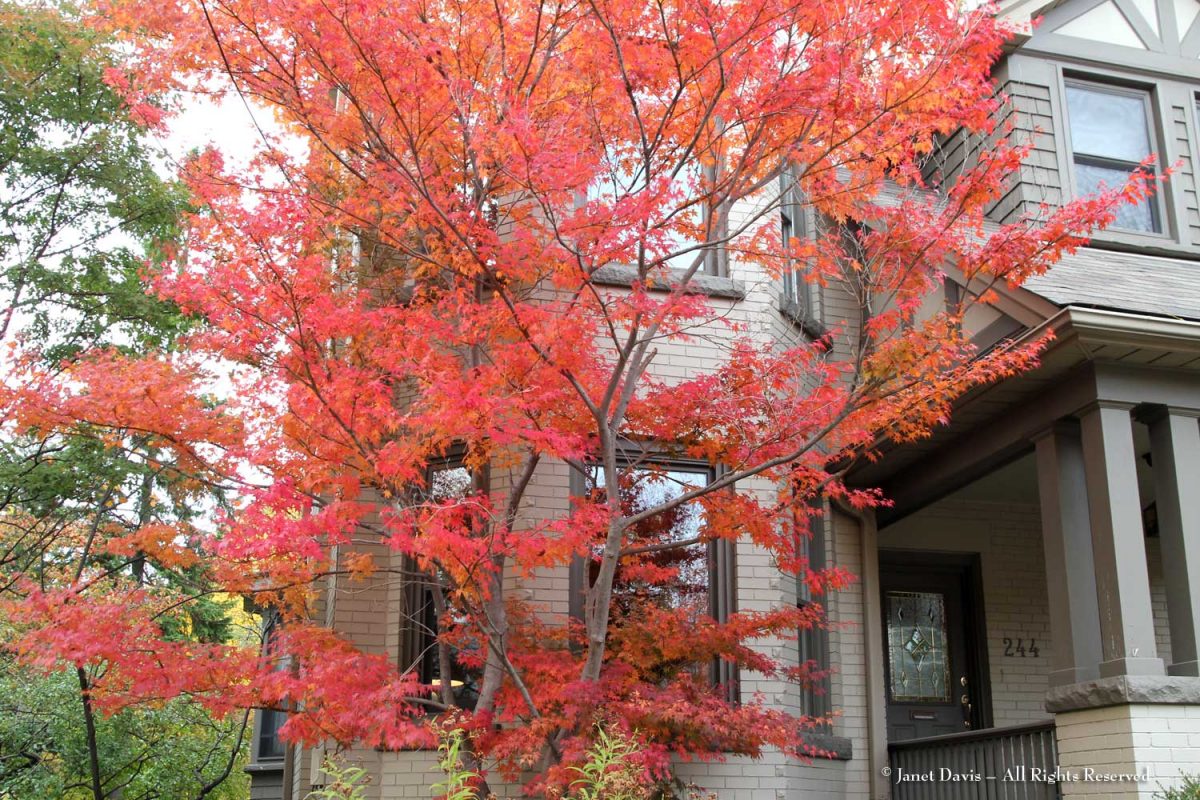
I don’t have any curtains in the front room, just the maple outside, but the jewels in my window are the blown glass witch balls I hung there eight years ago. Not to ward off bad spirits or protect my house, as is the apparent historic use of witch balls – though that would certainly be a side-benefit. Rather it’s that eye-popping contrast of the fall colour pigments of the maple (anthocyanins and carotenes) with the refracting light from within the blown glass that makes the window seem more like a dynamic art installation than a potentially kitschy folkcraft display.
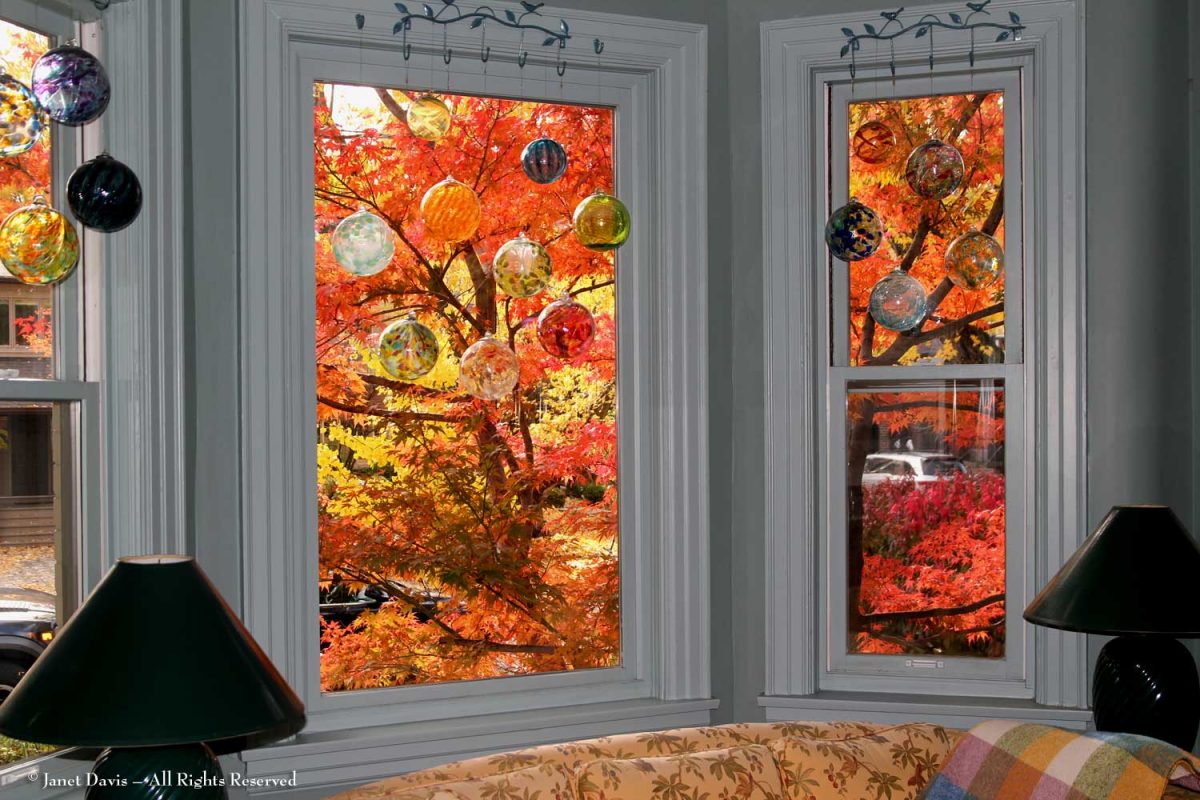
Kitsch. That’s what I was worried about a decade ago after impulsively purchasing a case lot of select witch balls from Iron Art in Ohio (at the time, I was allowed to place their minimum wholesale order, but they’ve since set up a retail site called Iron Elegance, and they also have a wide network of retailers). I’ve never been a fan of window coverings if there’s a view to close out – whether the lovely tree in the front garden or the panorama of the entire back garden from my kitchen window. Let the neighbours stare, I don’t care; nature is more important to me. But glass witch balls aren’t stained glass panels; as lovely as they might look, how would I hang them? I decided to go ahead and if I didn’t like the look, I could remove them. So I bought three wall-mounted metal cup racks featuring leaves and birds and a couple of small hooks for the larger middle window, then spray-painted them all dark-teal to go with the woodwork. I screwed them into my window frame, then, using fishing wire, I tied the balls at various levels in the upper part of the window. And as the sun shone through them that first November 2013, I was completely enchanted.
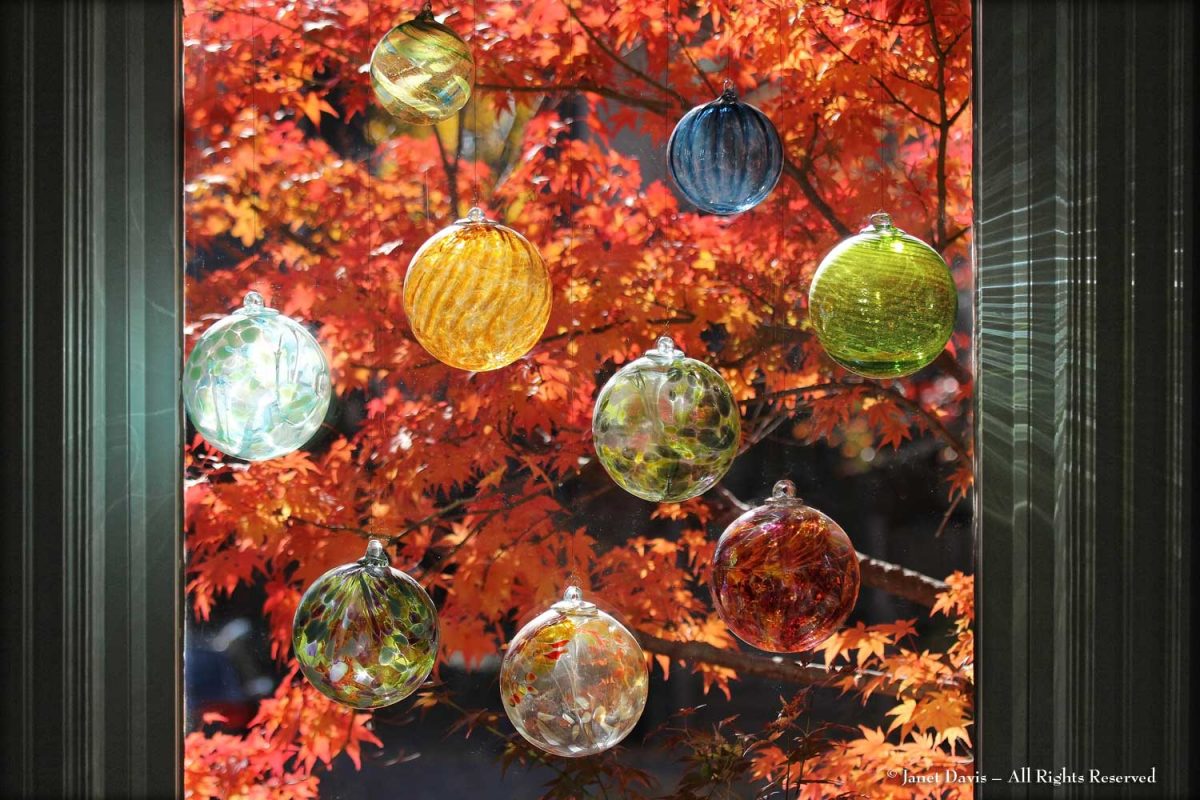
I have always loved the look of blown glass, but the first time I saw it used in a garden was in 2003 at my dear friend Virginia Weiler’s home in North Carolina, where the work of her friend John Nygren hung in her tree.
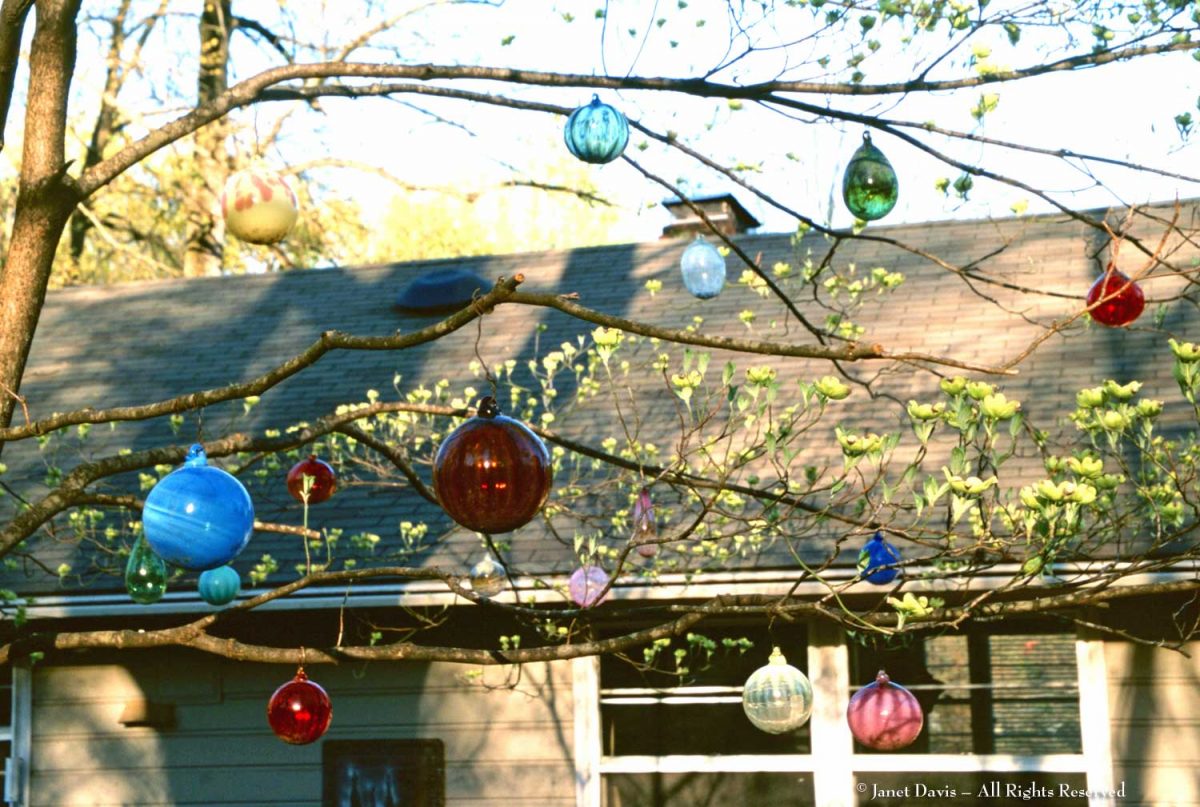
And during a 2008 garden writers’ tour of Portland, I was intrigued by Lucy Hardiman’s wonderful hanging glass display. I thought about how I might achieve something like this at home, but it seemed to me that the cold winters and winds in Toronto might be too severe for an outdoor display.
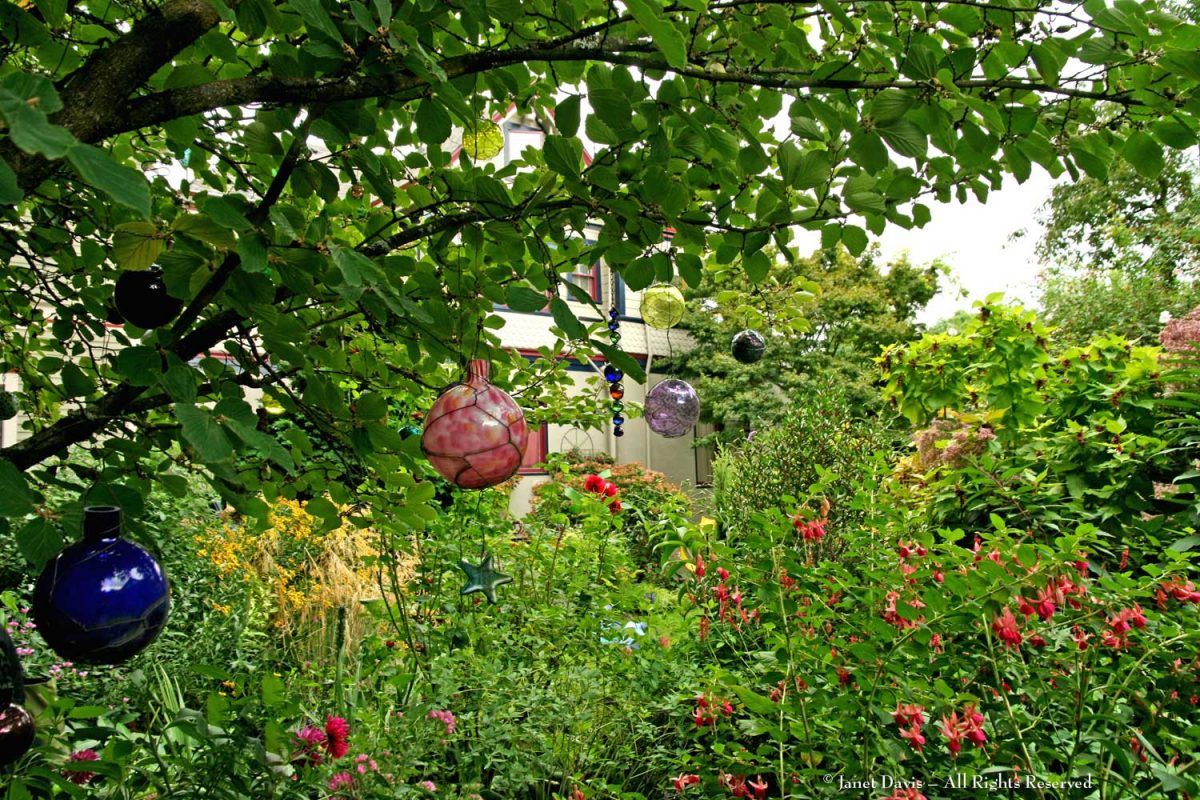
CORNING MUSEUM OF GLASS
In September 2008 we visited the Corning Museum of Glass in upstate New York and my love affair with glass continued. (You can read my blog about the museum here.)
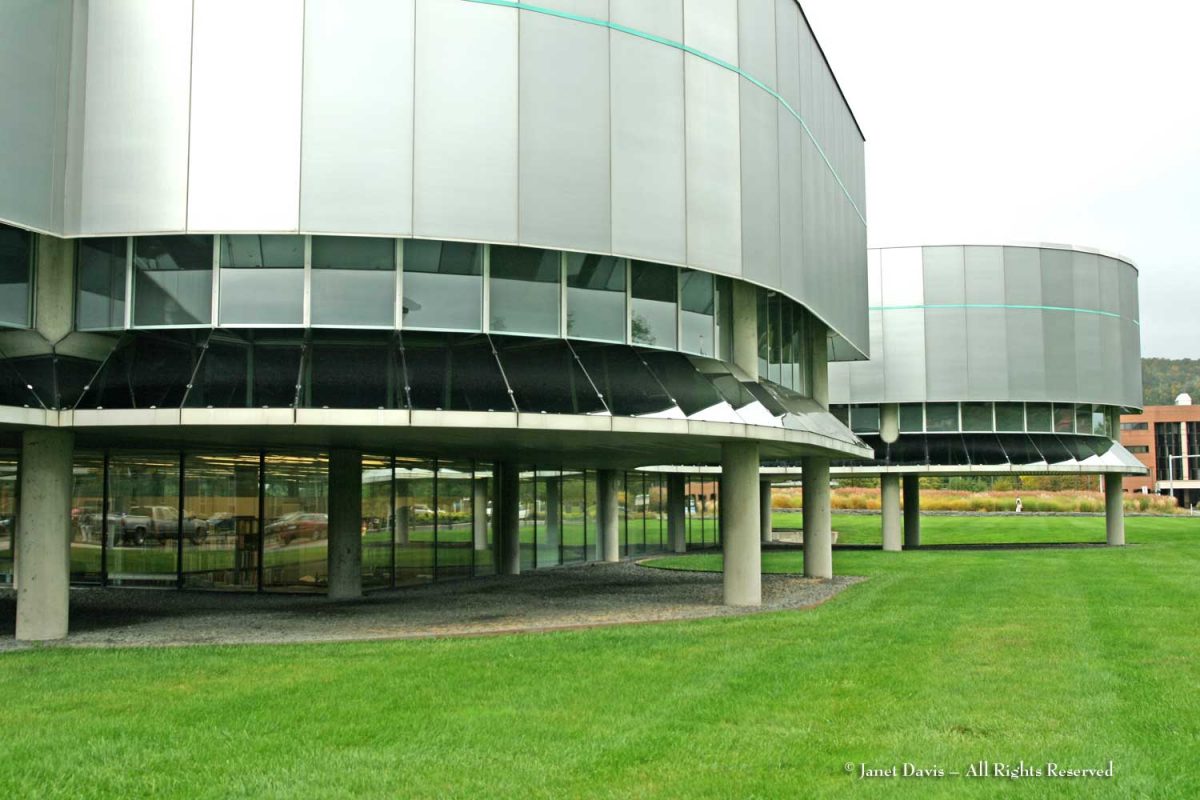
From Dale Chihuly’s ‘Fern Tower’ in the lobby…
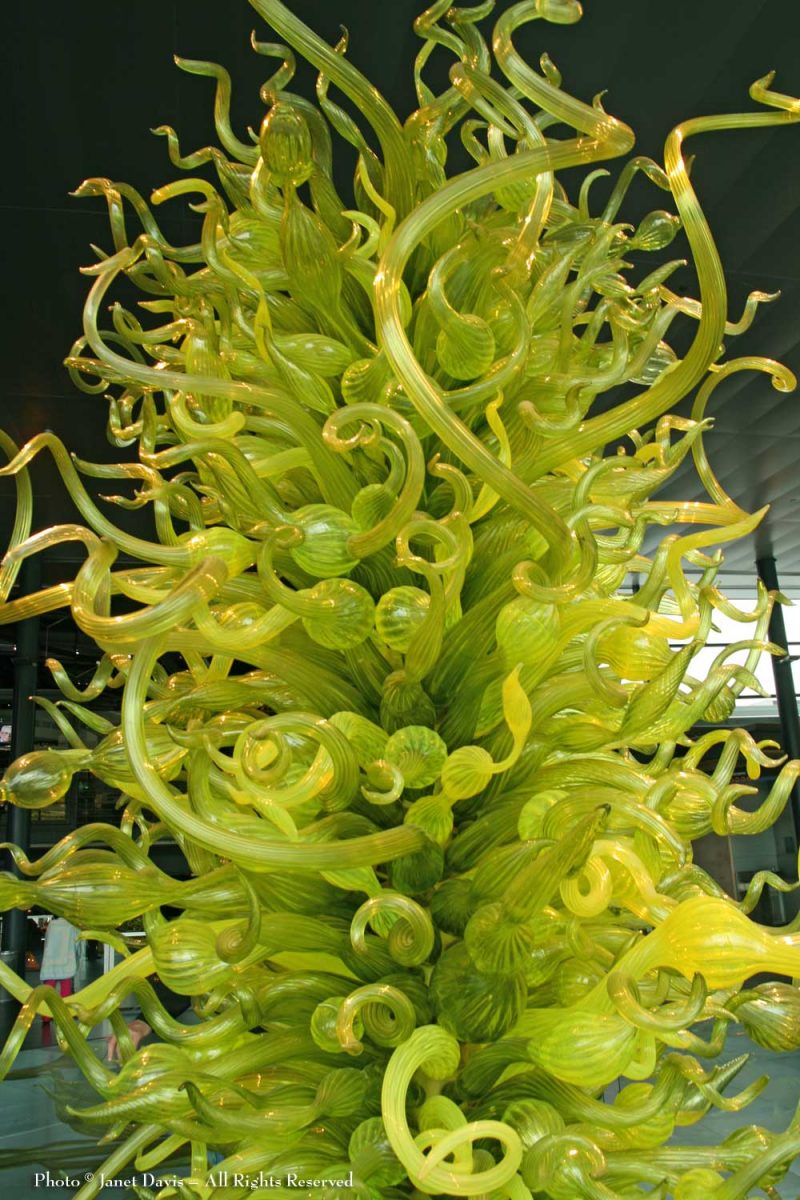
…. to the 1905 Louis Comfort Tiffany window of hollyhocks, clematis and the Hudson River, all that survives from the 44-room Rochroane Castle, built for Natchez oil and cotton millionaire Melchior Stewart Belthoover in Irvington, New York…
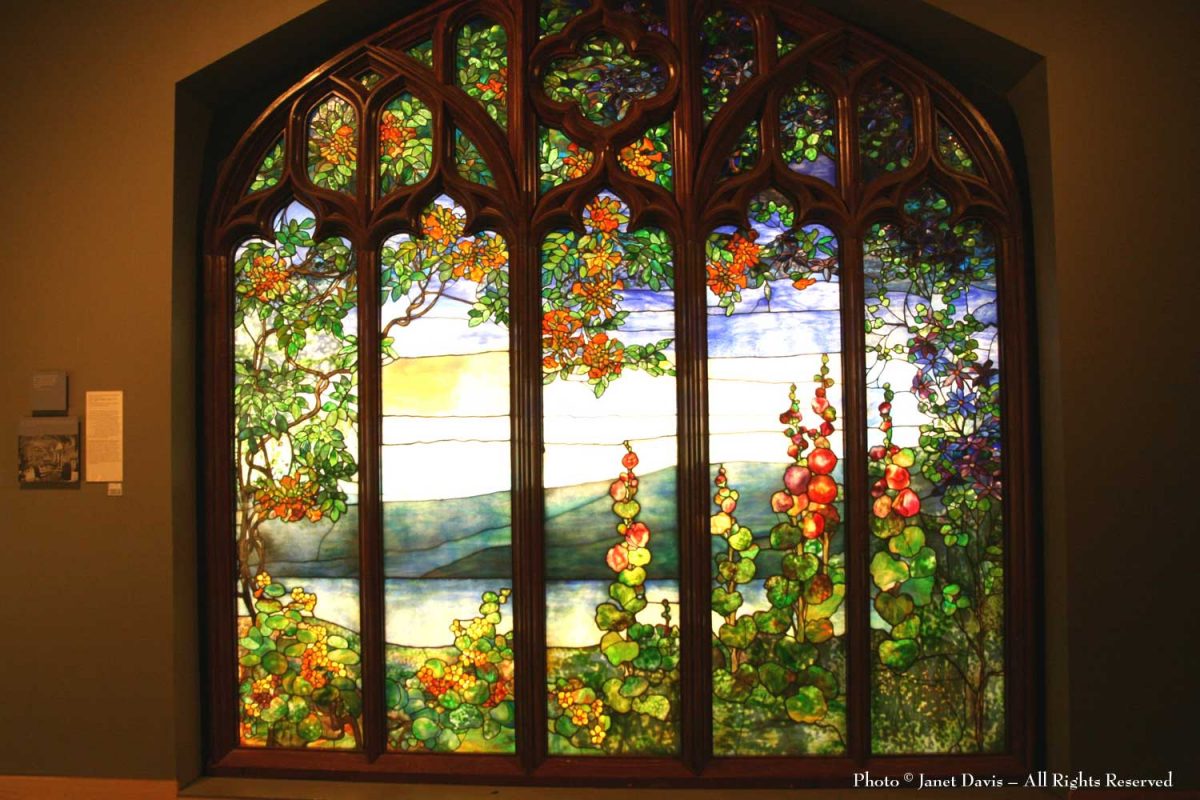
… to the exquisite forest glass or ‘waldglas’ drinking glasses made in northern Europe from the middle ages to the 18th century using tree and fern potash whose iron content lends the green hue…
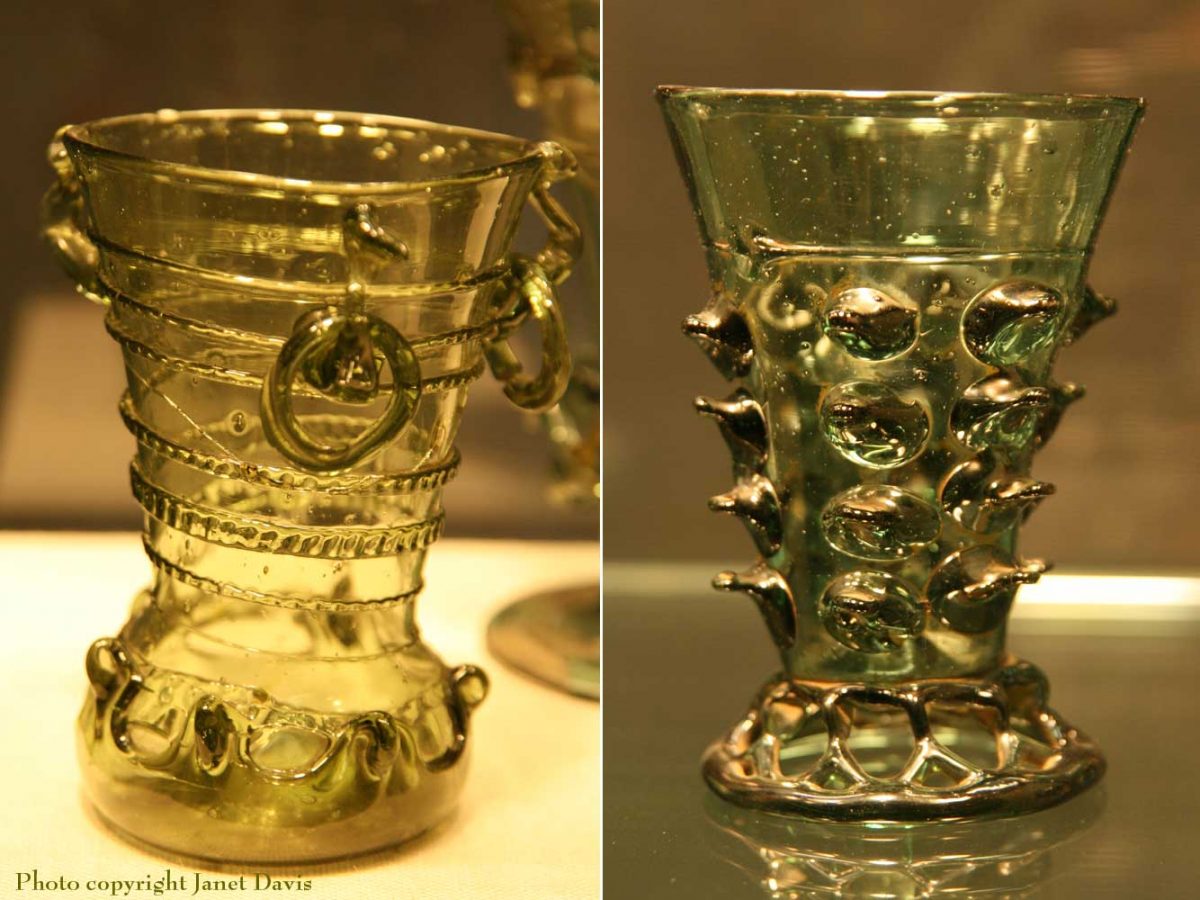
… to the sleek, modern work of Italian and Finnish glass artists….
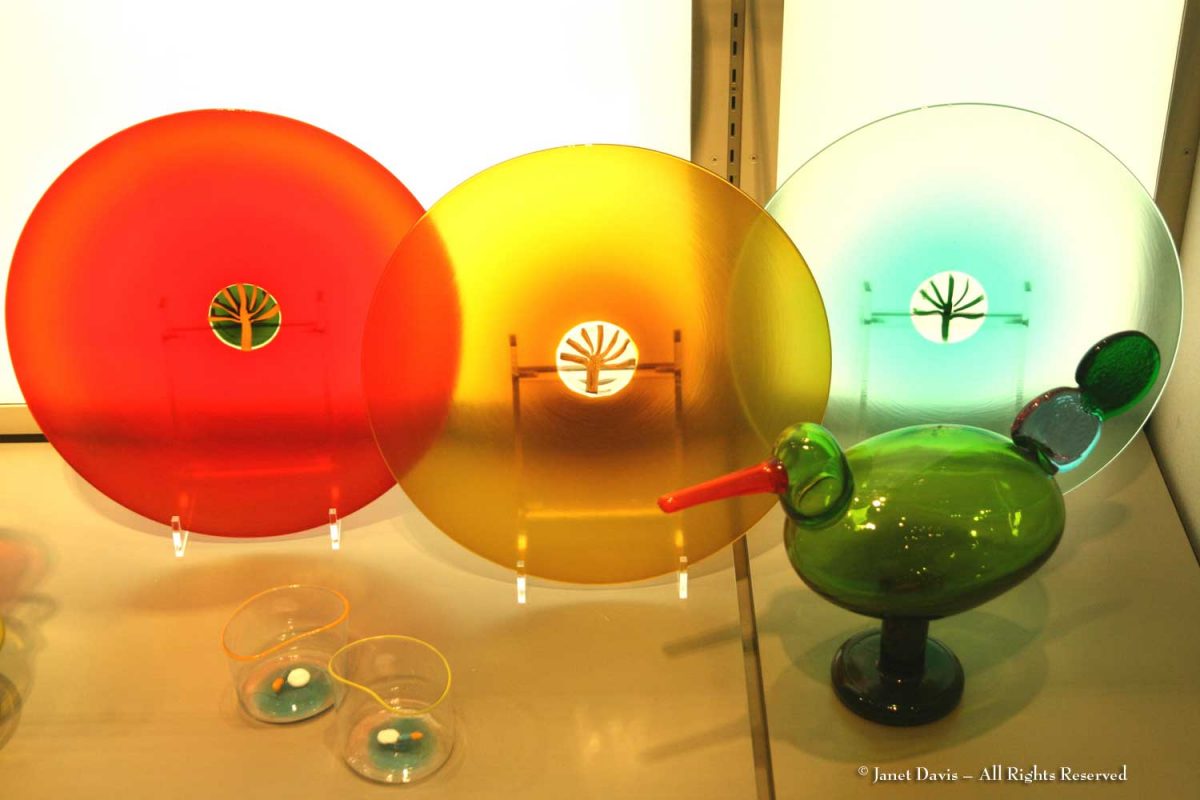
…. to a mosaic Mediterranean glass bowl from the 1st or 2nd century BC, I loved it all.
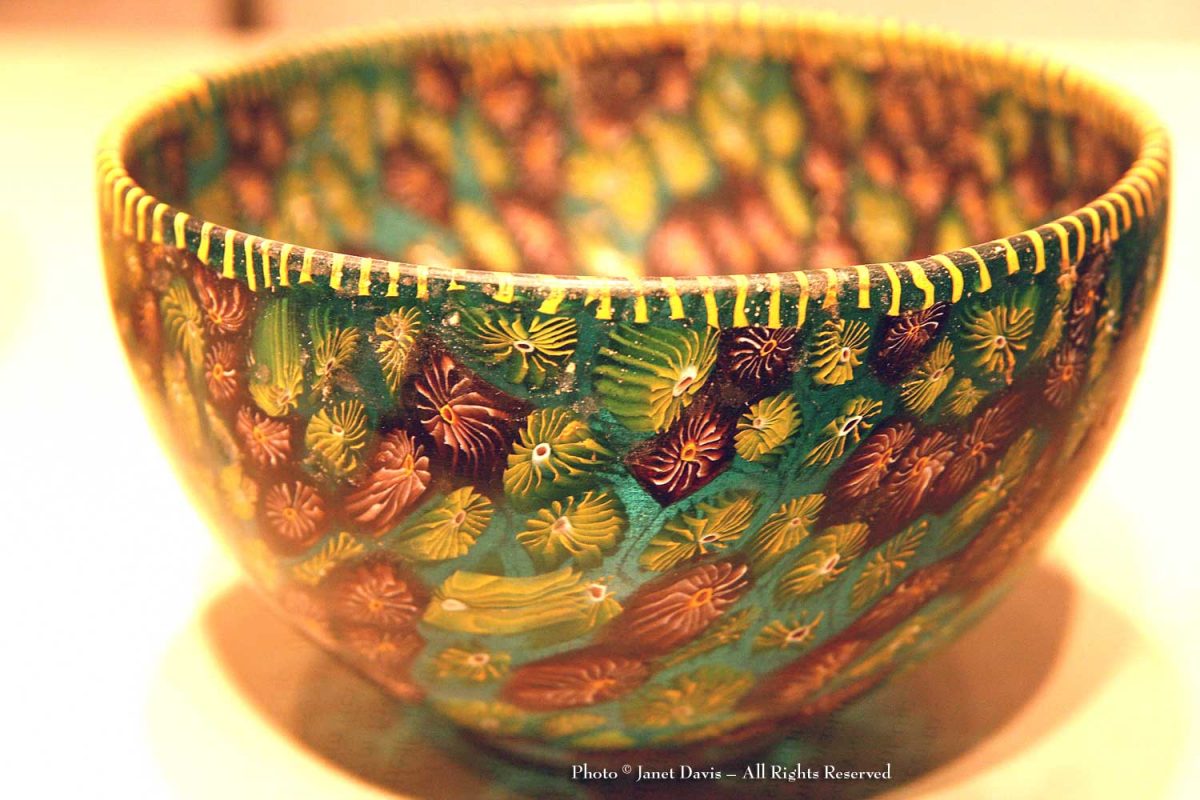
At the conclusion, I even had the opportunity to blow my own glass ball – with a little help from an expert.
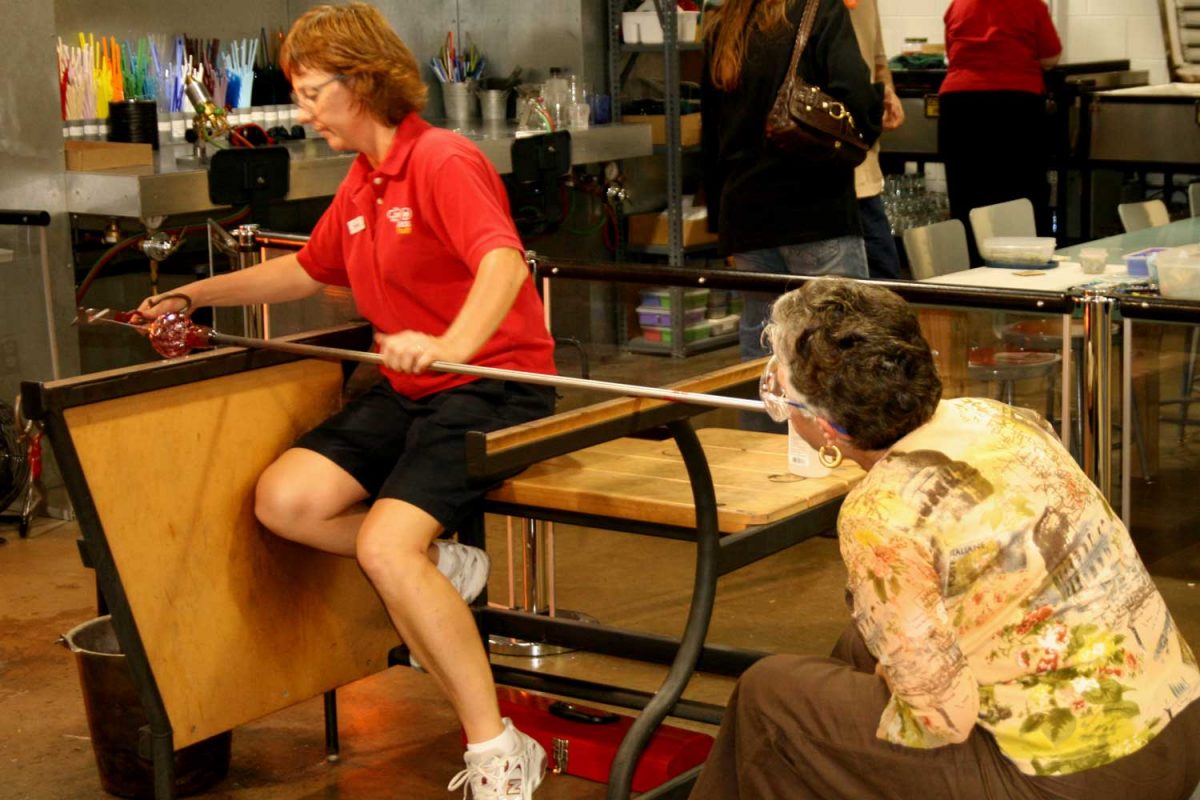
MURANO
Two years after visiting the Corning Museum of Glass, we were in Venice and decided to tour the island of Murano with its famous glass blowing factories.
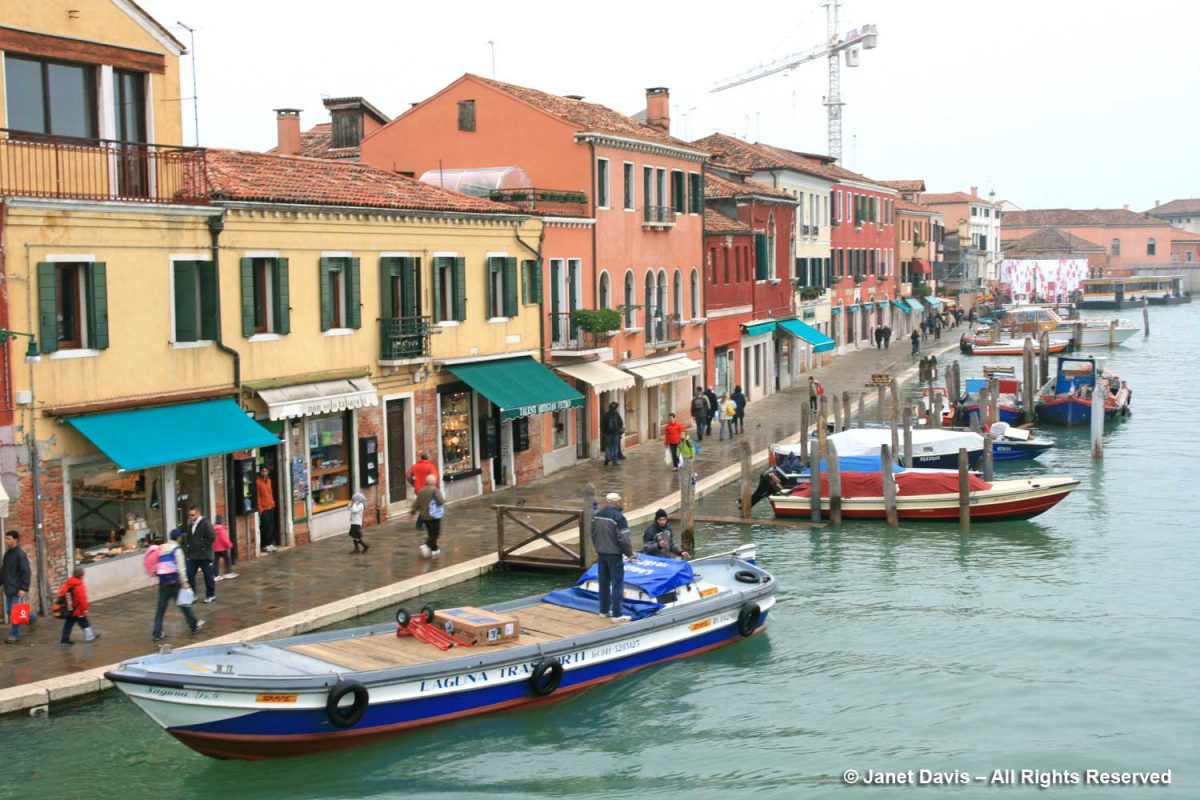
The tour was set up by our hotel with the pick-up and boat ride to the island courtesy of one of the glass furnace factories, so we were obliged to begin there. After a long, interesting tour of the firing floor, we visited all the display floors beginning with the most expensive sculptures and chandeliers at the top (nope!) and descending to the affordable cufflinks! But somehow we ended up ordering six of the most beautiful, gold-rimmed glasses you’ve ever seen, which were mailed to us weeks later. I also wrote a blog about this memorable day.
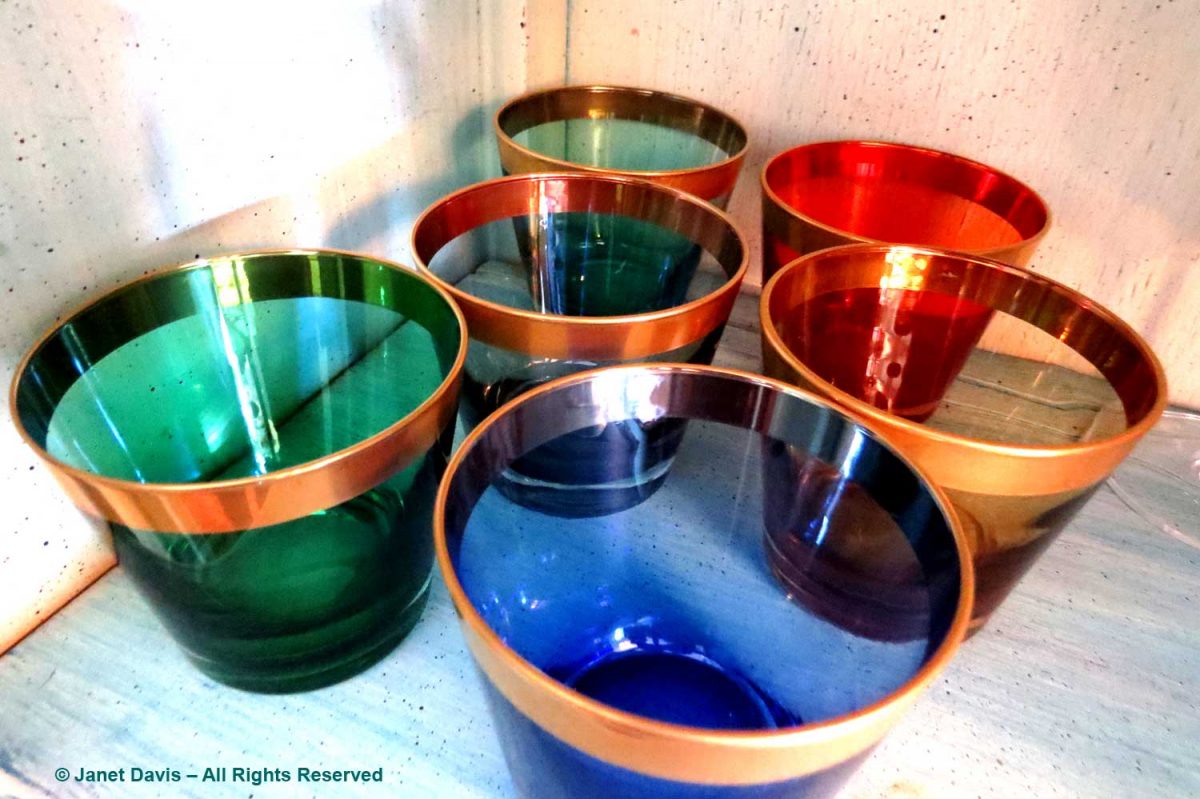
After the obligatory furnace tour ended, we walked around the small island, visiting the interesting glass museum and window shopping. I found a jewelry shop owned by a young woman busy making earrings and beautiful blown-glass bead necklaces.
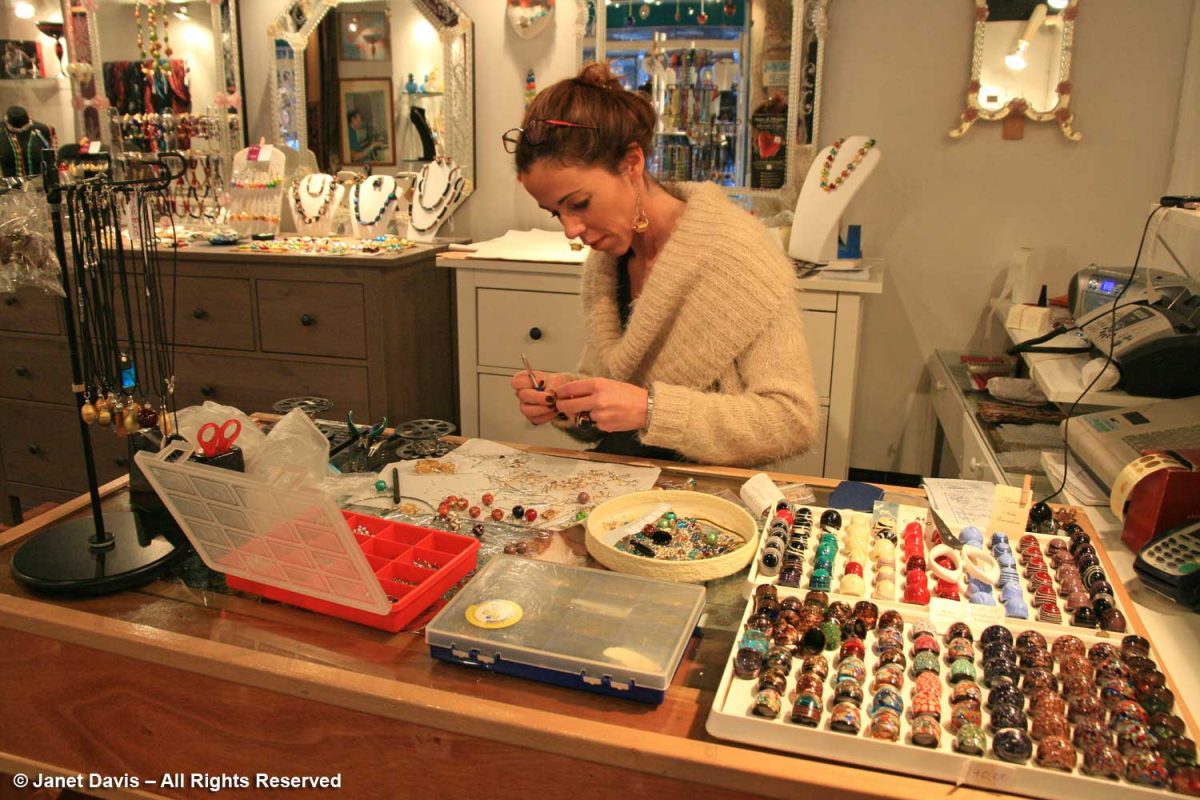
One of those became my Christmas gift from Santa that year.
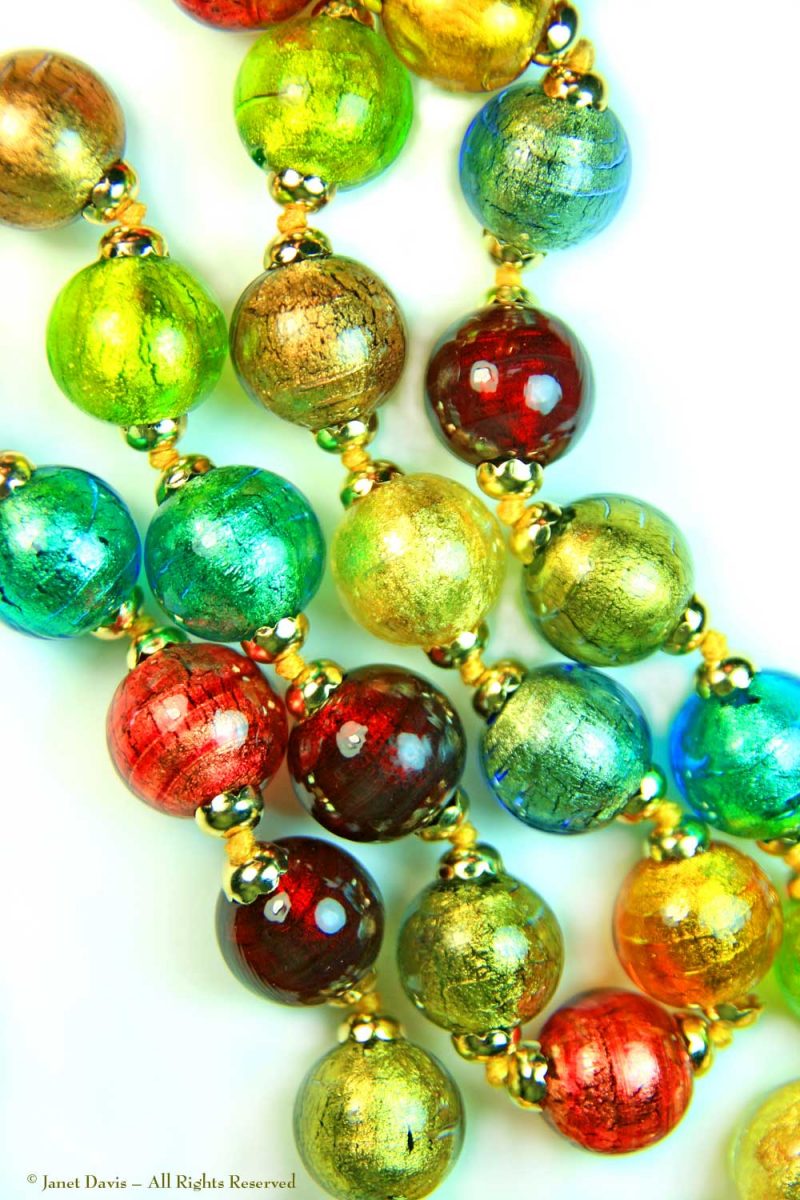
Walking on, we came upon this spectacular sculpture by Simone Cenedese called Comet Glass Star. Then we had one of our best meals on our entire Venetian vacation, at a little workman’s osteria on Murano.
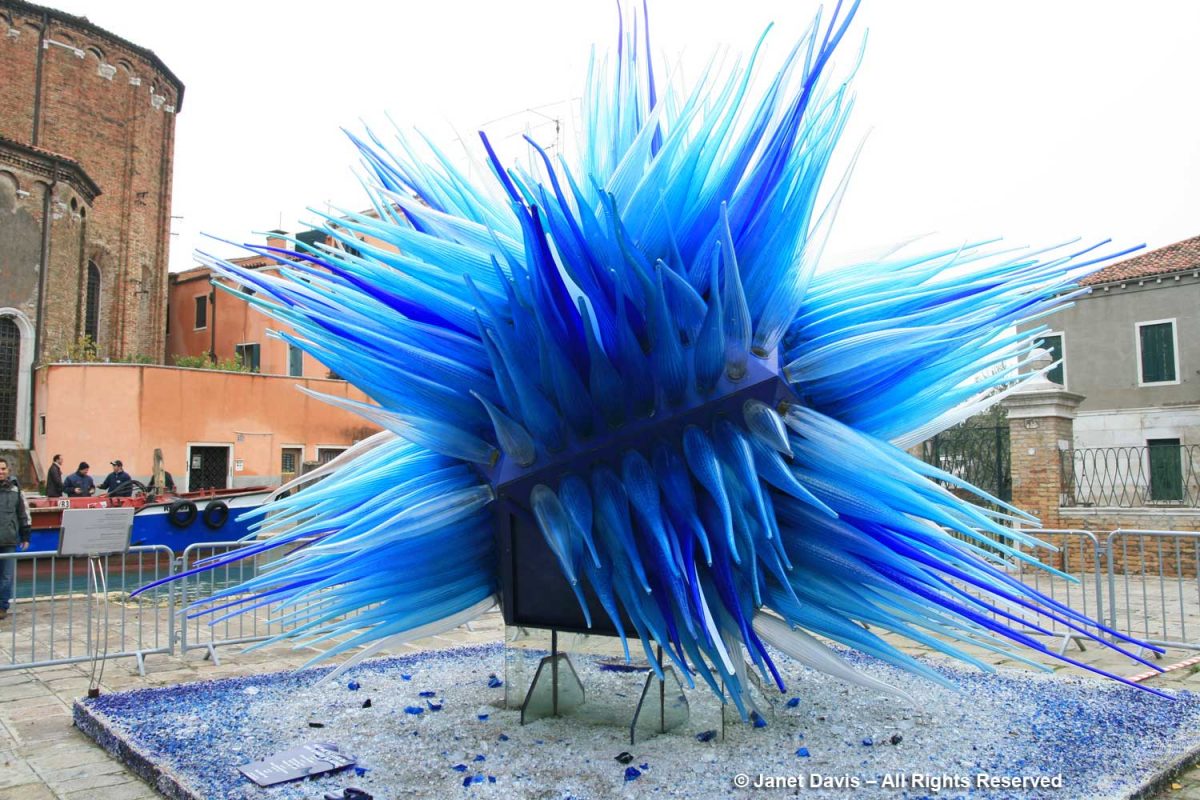
The Magic of Light in my Window
Though ever more humble, I still find myself sitting in my living room on those days when the sun shines through the fall leaves of the maple….
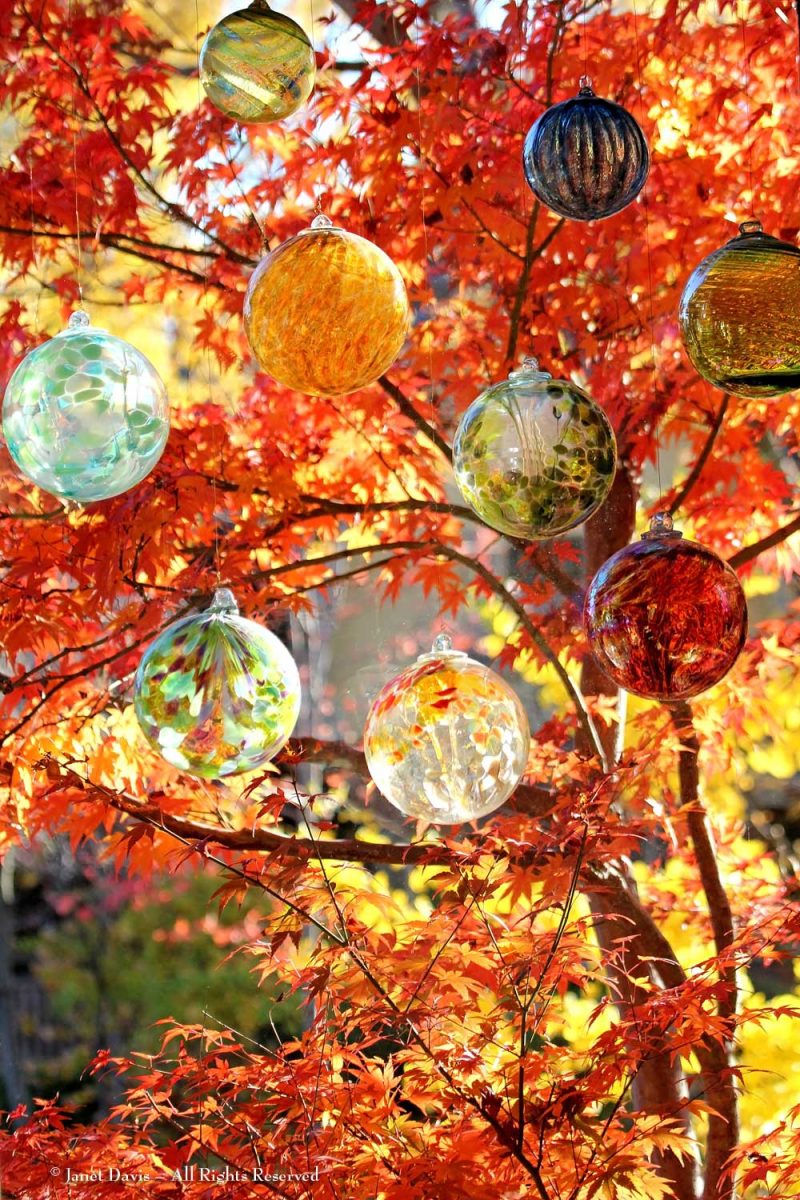
…. and hits the splashes of colour in the witch balls.
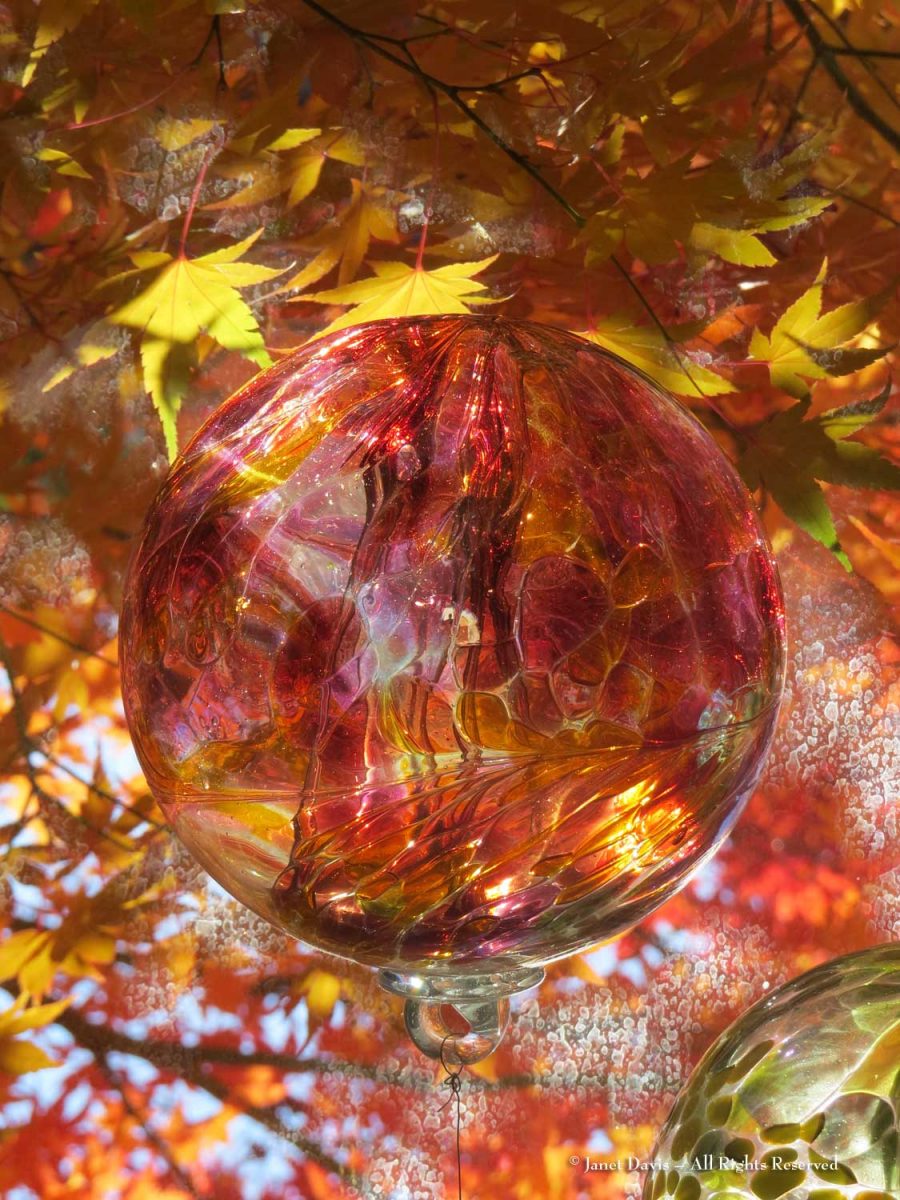
I even made a video a few years back to try to explain it.
Today there’s freezing rain outside and soon snow will be in the forecast in Toronto. On the snowy November day when I photographed the window, below, the leaves hadn’t even fallen yet.
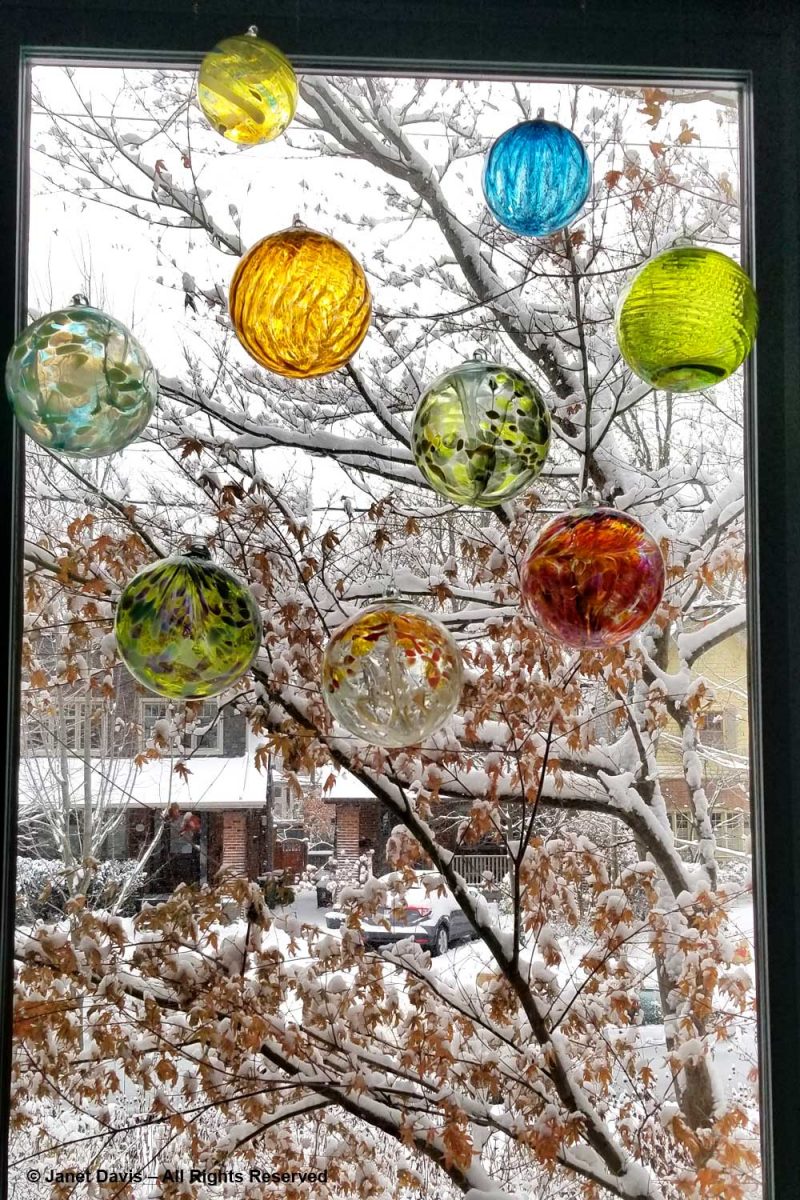
And I recall vividly the winter wonderland look of the tree after our devastating ice storm of December 21, 2013.
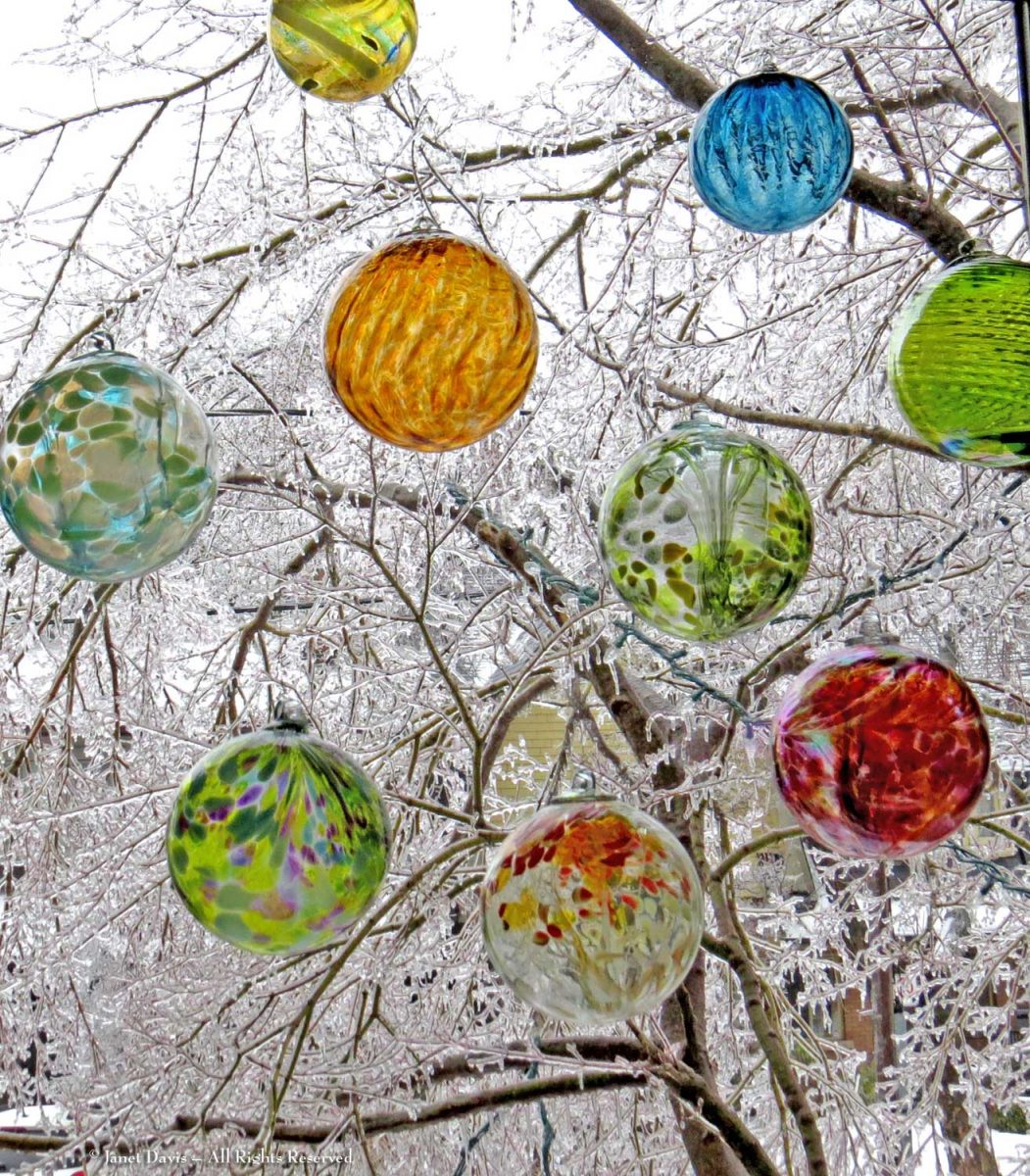
Sometimes, when I have holiday lights on the maple’s branches, I stand in the front room looking out in the darkness. The witch balls even look festive at Christmas!
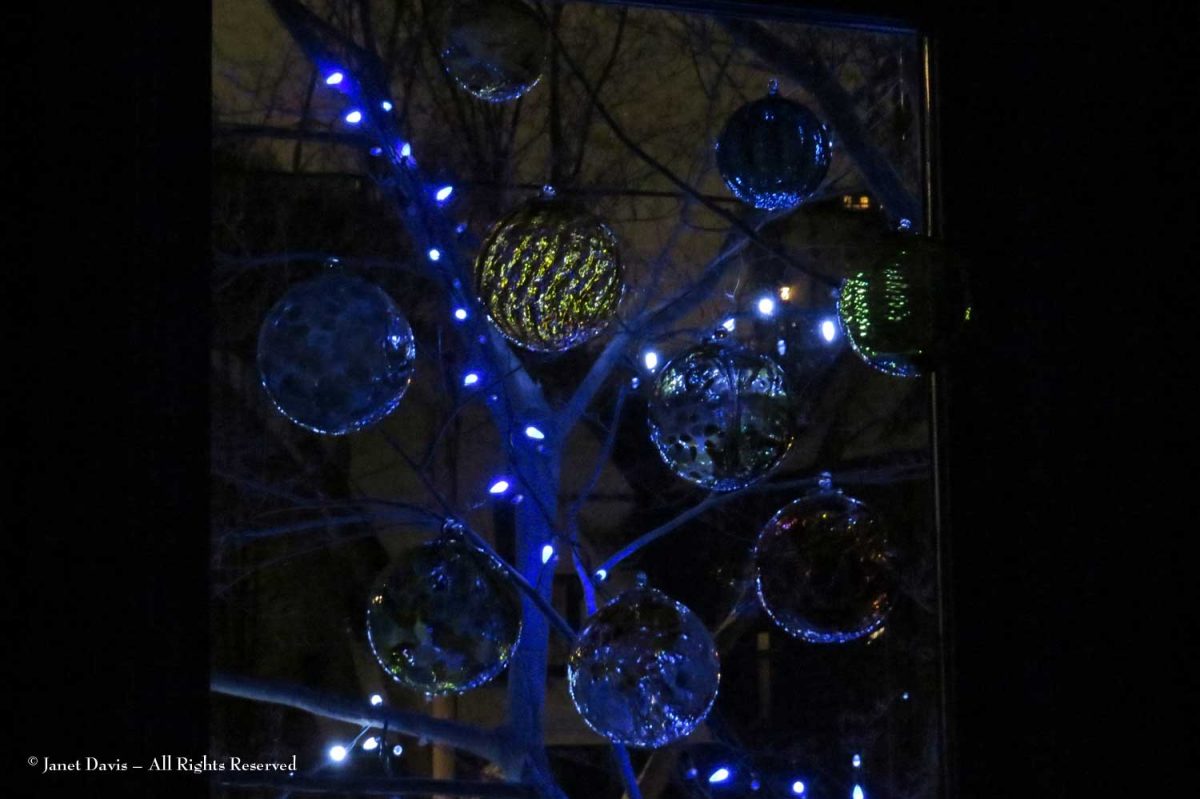
In late winter or early spring, I can often catch the resident cardinals in the maple tree.
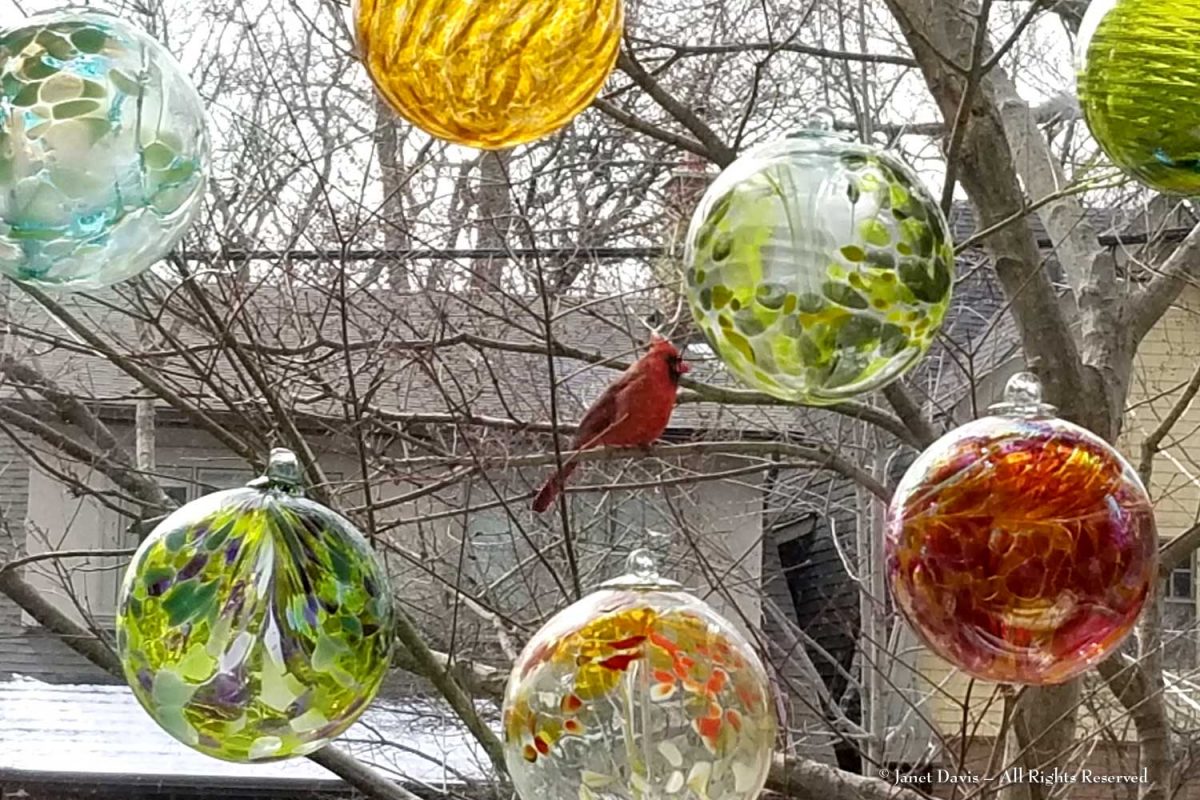
At that time of year, when the tree hasn’t yet leafed out, I especially appreciate the detail and colours of the blown glass, whether blue…
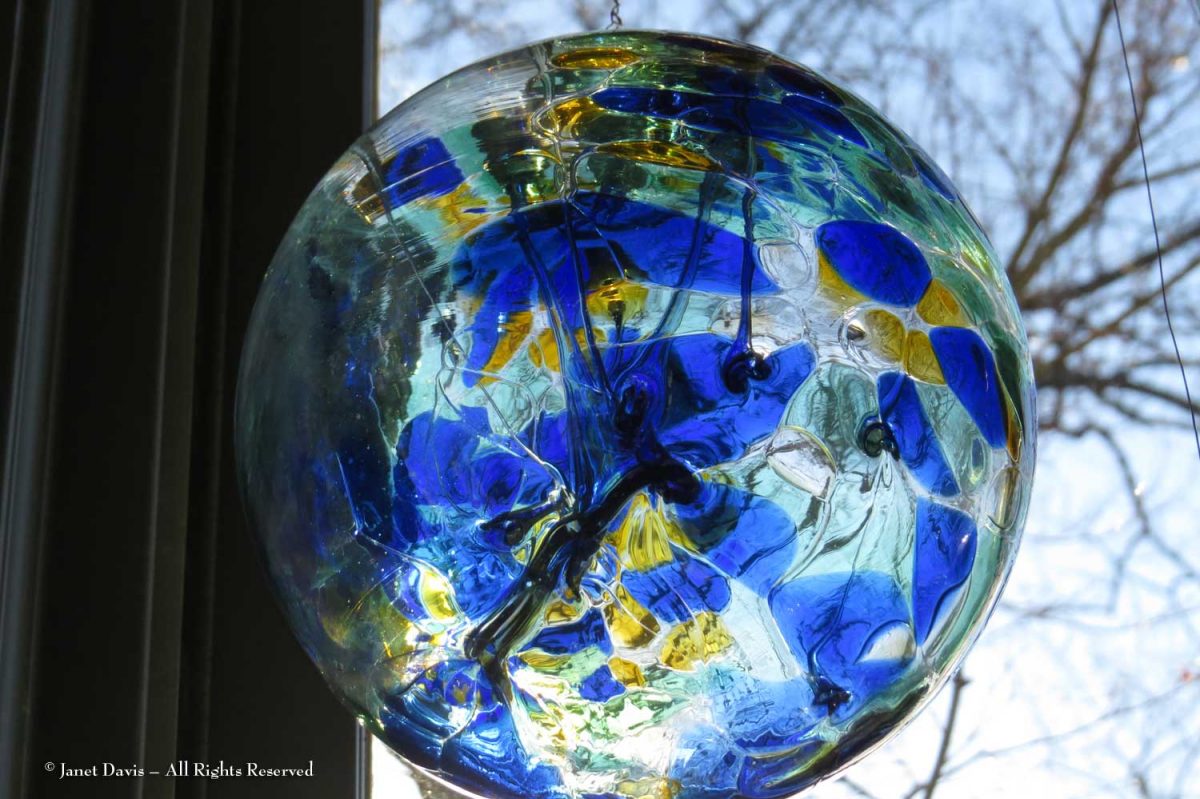
…. or green…
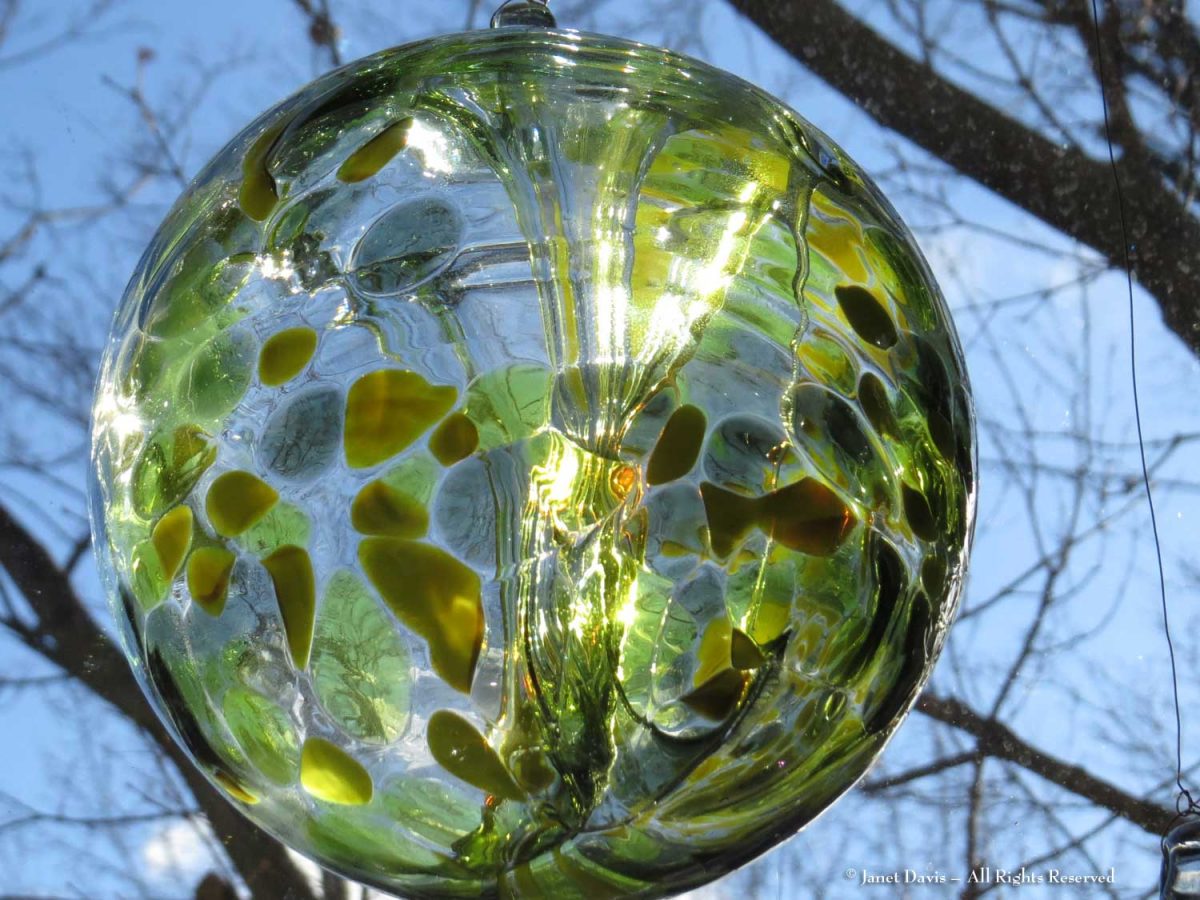
… or a glass so clear you can see the tiny grains from the glass-making process.
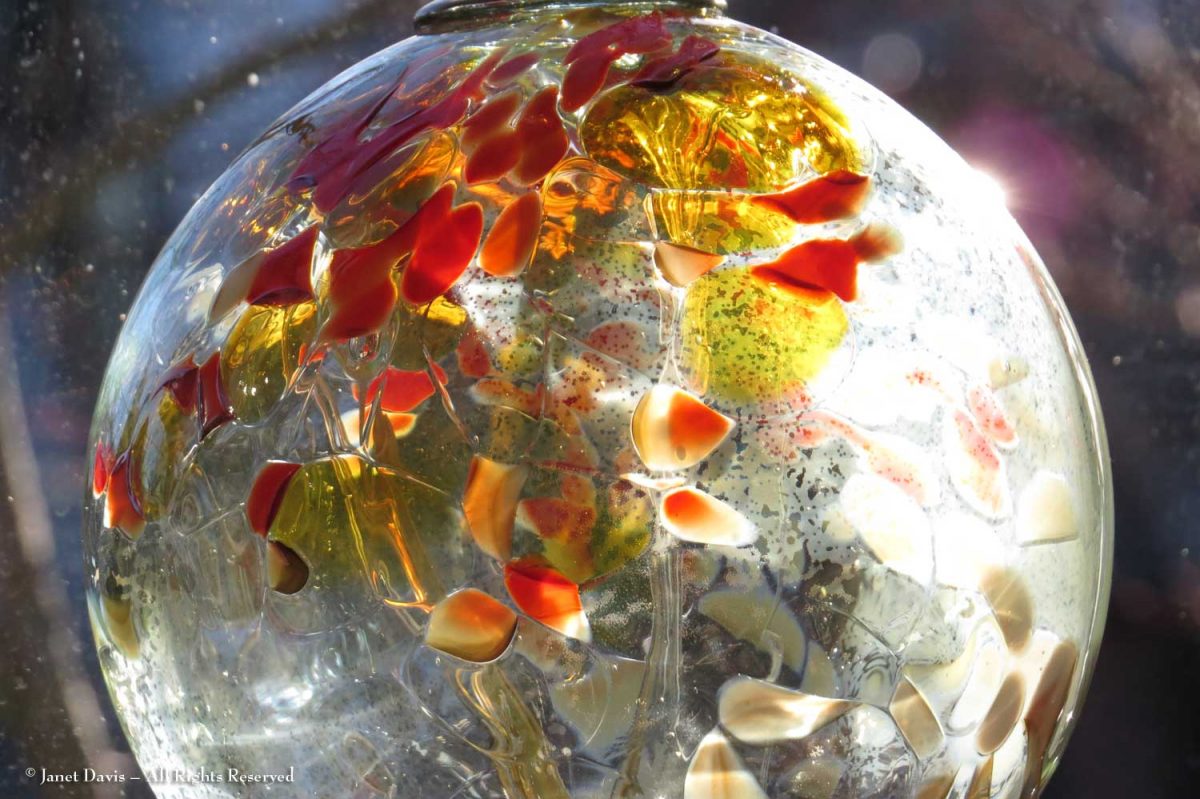
And then, suddenly, it’s June and my “living” living room ‘curtain’ is back in place, its leaves energized by the power of the sun and the glass balls refracting all the light that’s left over.
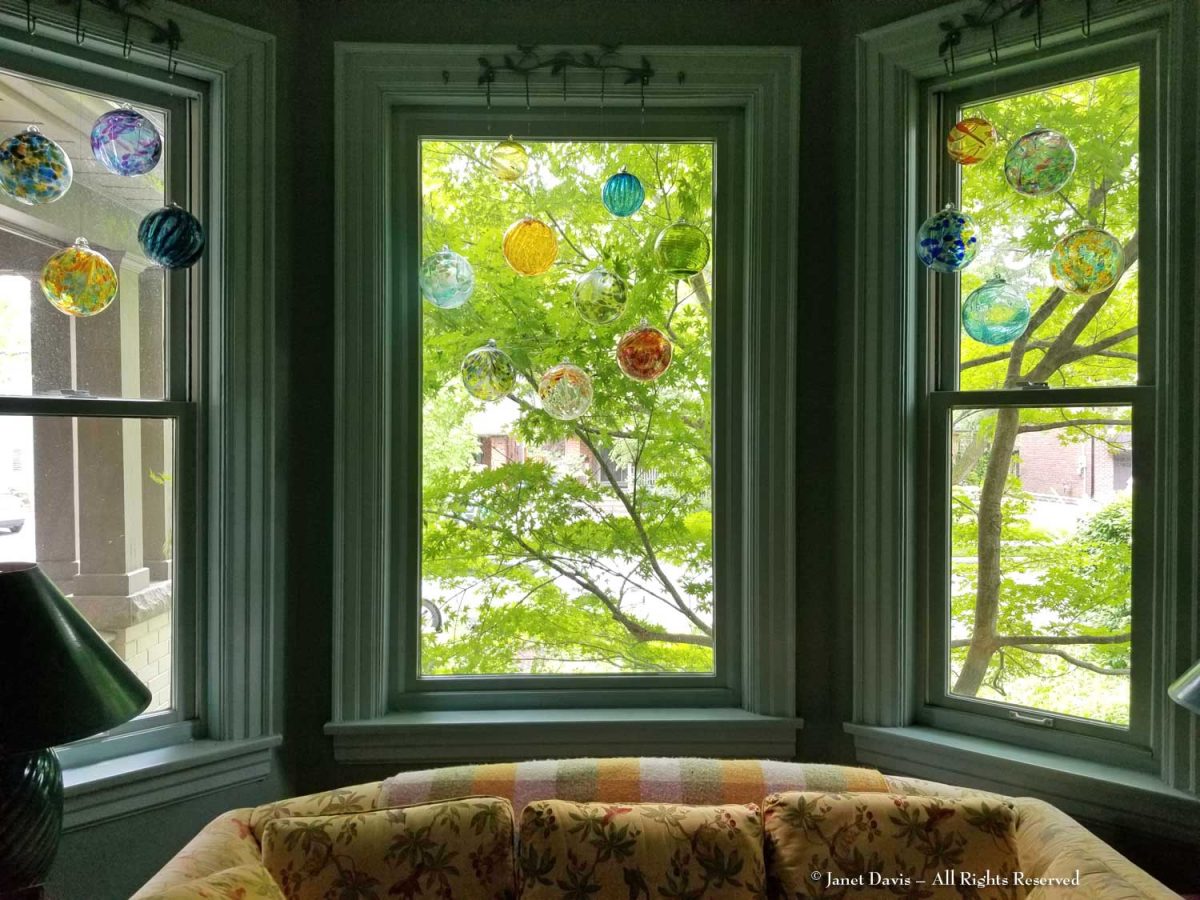
After I gave the witch balls their every-three-years wash last week, I watched them turning for what seemed like hours. I’m sure there’s some Galilean law of reciprocal motion about what happens when you twist a sphere suspended by a wire, but it seemed even more magical, as if they were rotating in sympathy with the fluttering leaves on the maple. So I’m ending with this magical moment, which I’ve set to music by the very generous T.R.G. Banks.
